Anpassungsfähigkeit und Resilienz des Finanzsystems
Diese Forschungsgruppe untersucht kritische Aspekte der Anpassungsfähigkeit und Widerstandsfähigkeit von Finanzsystemen. Sie analysiert die Auswirkungen von Naturkatastrophen auf Finanzsysteme, die Auswirkungen politischer Präferenzen für die grüne Transformation und die Bedeutung von Kultur in den Volkswirtschaften.
Forschungscluster
Finanzresilienz und RegulierungIhr Kontakt

Mitglied - Abteilung Finanzmärkte
PROJEKTE
07.2016 ‐ 12.2018
Relationship Lenders and Unorthodox Monetary Policy: Investment, Employment, and Resource Reallocation Effects
Leibniz-Gemeinschaft
We combine a number of unique and proprietary data sources to measure the impact of relationship lenders and unconventional monetary policy during and after the European sovereign debt crisis on the real economy. Establishing systematic links between different research data centers (Forschungsdatenzentren, FDZ) and central banks with detailed micro-level information on both financial and real activity is the stand-alone proposition of our proposal. The main objective is to permit the identification of causal effects, or their absence, regarding which policies were conducive to mitigate financial shocks and stimulate real economic activities, such as employment, investment, or the closure of plants.
01.2015 ‐ 12.2019
Interactions between Bank-specific Risk and Macroeconomic Performance
Deutsche Forschungsgemeinschaft (DFG)
Referierte Publikationen
Allocation de crédit et création de valeur par les banques : l’impact de la banque relationnelle en temps normal et en temps de crise
in: Revue d'économie financière, Nr. 106, 2012
Abstract
Cet article passe en revue la littérature sur l’allocation de crédit et la création de valeur par les banques. Il se concentre sur l’activité de banque relationnelle, à savoir le fait qu’une banque et un emprunteur se lancent dans de multiples interactions et que chacun des deux agents s’efforce d’obtenir des informations spécifiques sur l’autre. Il montre comment la banque relationnelle génère des coûts et des bénéfices à la fois pour les entreprises et pour les banques, mais qu’en règle générale, elle est source de valeur pour chacun d’eux. Néanmoins, l’incidence de ce type de relation est en grande partie fonction du contexte économique (période normale ou période de crise). Est aussi abordée la manière dont l’allocation de crédit, mesurée par la spécialisation sectorielle, affecte les entreprises et les banques. Enfin, l’examen de la littérature récente en matière de titrisation et de relation bancaire permet de mettre en évidence la manière dont la titrisation affecte les effets de la banque relationnelle.
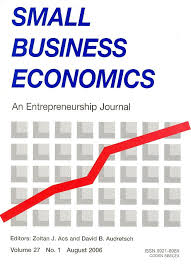
The Impact of Firm and Industry Characteristics on Small Firms’ Capital Structure
in: Small Business Economics, Nr. 4, 2012
Abstract
We study the impact of firm and industry characteristics on small firms’ capital structure, employing a proprietary database containing financial statements of Dutch small and medium-sized enterprises (SMEs) from 2003 to 2005. The firm characteristics suggest that the capital structure decision is consistent with the pecking-order theory: Dutch SMEs use profits to reduce their debt level, and growing firms increase their debt position since they need more funds. We further document that profits reduce in particular short-term debt, whereas growth increases long-term debt. We also find that inter- and intra-industry effects are important in explaining small firms’ capital structure. Industries exhibit different average debt levels, which is in line with the trade-off theory. Furthermore, there is substantial intra-industry heterogeneity, showing that the degree of industry competition, the degree of agency conflicts, and the heterogeneity in employed technology are also important drivers of capital structure.
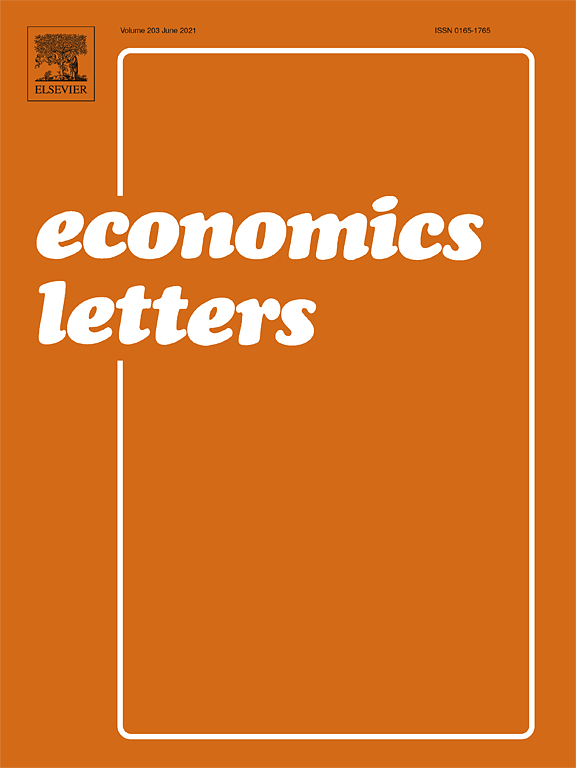
Enhancing Market Power by Reducing Switching Costs
in: Economics Letters, Nr. 3, 2012
Abstract
A proportional decrease in switching costs increases competition and social welfare. However, a lump-sum decrease in switching costs softens competition and does not invariably increase social welfare.
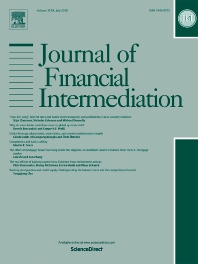
Rules versus Discretion in Loan Rate Setting
in: Journal of Financial Intermediation, Nr. 4, 2011
Abstract
Loan rates for seemingly identical borrowers often exhibit substantial dispersion. This paper investigates the determinants of the dispersion in interest rates on loans granted by banks to small and medium sized enterprises. We associate this dispersion with the loan officers’ use of “discretion” in the loan rate setting process. We find that “discretion” is most important if: (i) loans are small and unsecured; (ii) firms are small and opaque; (iii) the firm operates in a large and highly concentrated banking market; and (iv) the firm is distantly located from the lender. Consistent with the proliferation of information-technologies in the banking industry, we find a decreasing role for “discretion” over time in the provision of small credits to opaque firms. While widely used in the pricing of loans, “discretion” plays only a minor role in the decisions to grant loans.
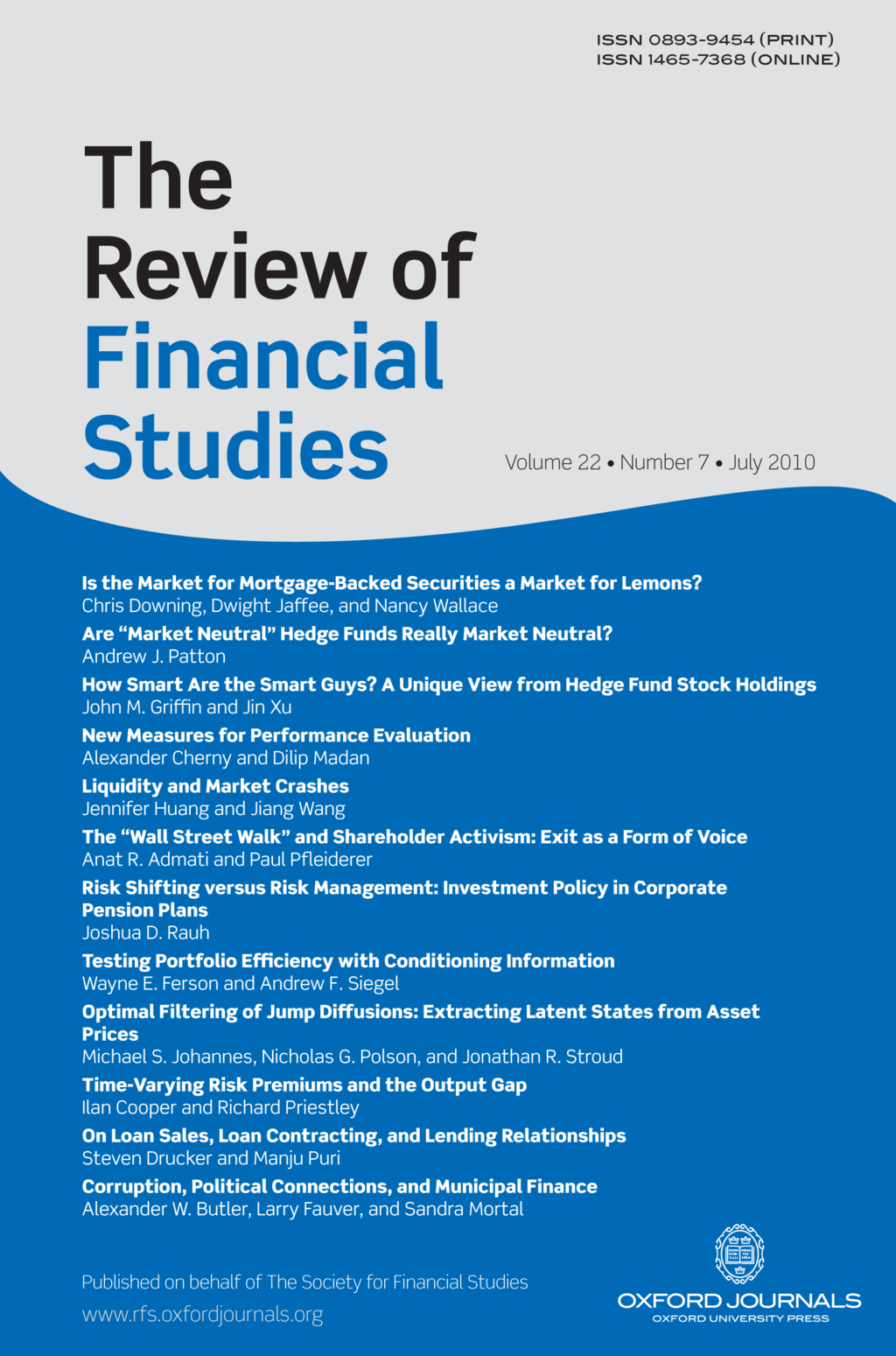
Staying, Dropping, or Switching: The Impacts of Bank Mergers on Small Firms
in: Review of Financial Studies, Nr. 4, 2011
Abstract
Assessing the impacts of bank mergers on small firms requires separating borrowers with single versus multiple banking relationships and distinguishing the three alternatives of “staying,” “dropping,” and “switching” of relationships. Single-relationship borrowers who “switch” to another bank following a merger will be less harmed than those whose relationship is “dropped” and not replaced. Using Belgian data, we find that single-relationship borrowers of target banks are more likely than other borrowers to be dropped. We track postmerger performance and show that many dropped target-bank borrowers are harmed by the merger. Multiple-relationship borrowers are less harmed, as they can better hedge against relationship discontinuations.
Arbeitspapiere
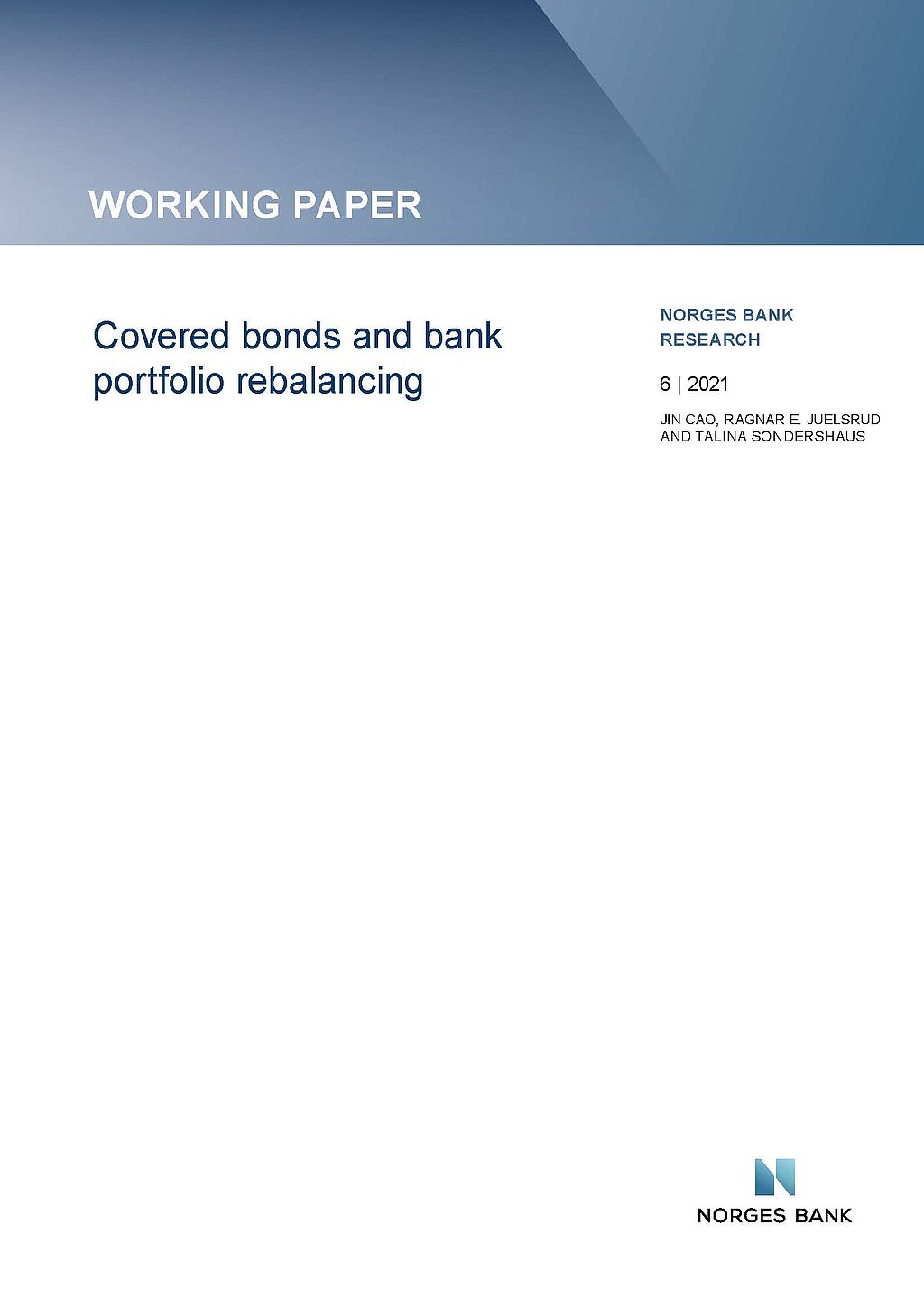
Covered Bonds and Bank Portfolio Rebalancing
in: Norges Bank Working Papers, Nr. 6, 2021
Abstract
We use administrative and supervisory data at the bank and loan level to investigate the impact of the introduction of covered bonds on the composition of bank balance sheets and bank risk. Covered bonds, despite being collateralized by mortgages, lead to a shift in bank lending from mortgages to corporate loans. Young and low-rated firms in particular receive more credit, suggesting that overall credit risk increases. At the same time, we find that total balance sheet liquidity increases. We identify the channel in a theoretical model and provide empirical evidence: Banks with low initial liquidity and banks with sufficiently high risk-adjusted return on firm lending drive the results.
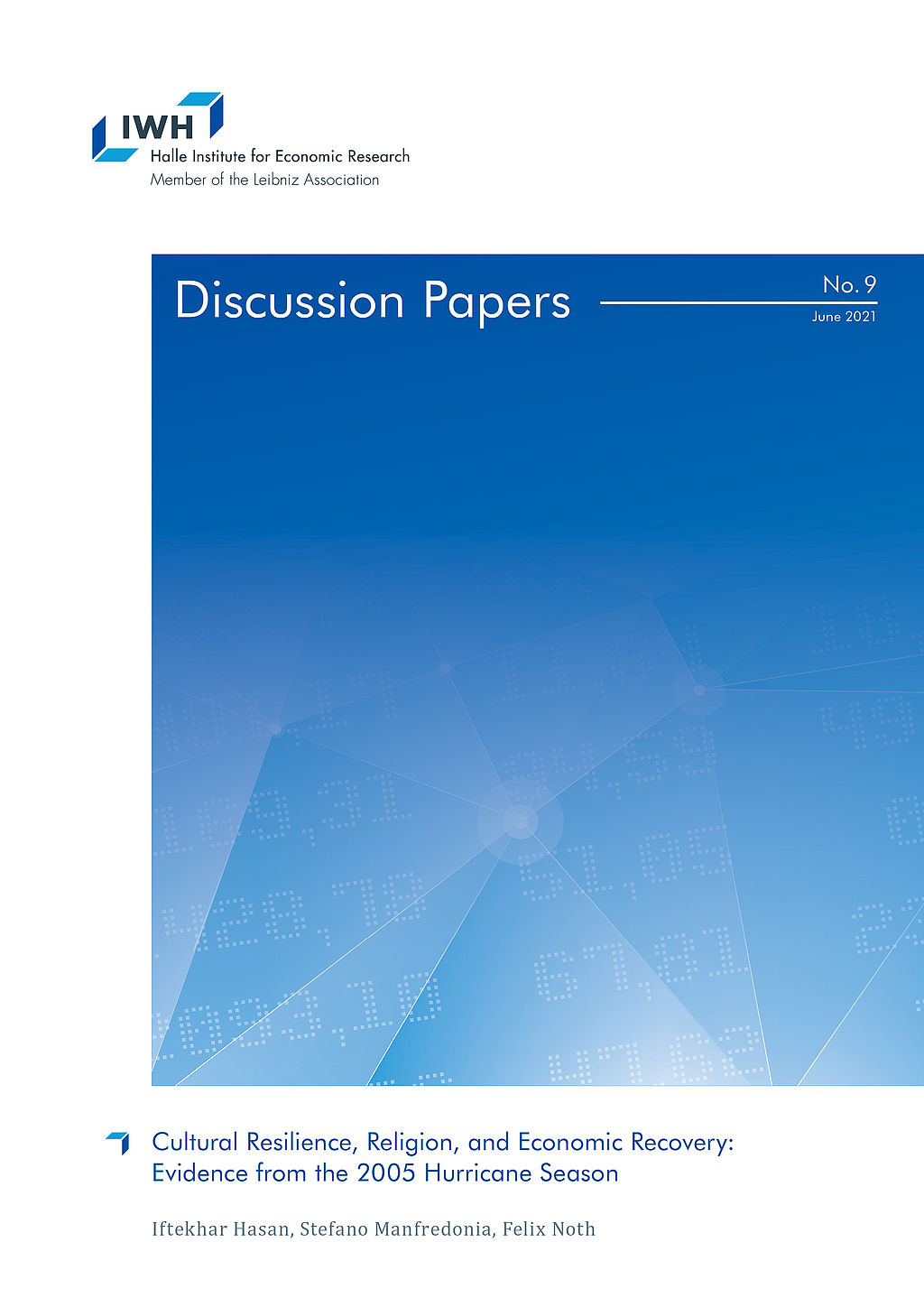
Cultural Resilience, Religion, and Economic Recovery: Evidence from the 2005 Hurricane Season
in: IWH Discussion Papers, Nr. 9, 2021
Abstract
This paper investigates the critical role of religion in the economic recovery after high-impact natural disasters. Exploiting the 2005 hurricane season in the southeast United States, we document that establishments in counties with higher religious adherence rates saw a significantly stronger recovery in terms of productivity for 2005-2010. Our results further suggest that a particular religious denomination does not drive the effect. We observe that different aspects of religion, such as adherence, shared experiences from ancestors, and institutionalised features, all drive the effect on recovery. Our results matter since they underline the importance of cultural characteristics like religion during and after economic crises.
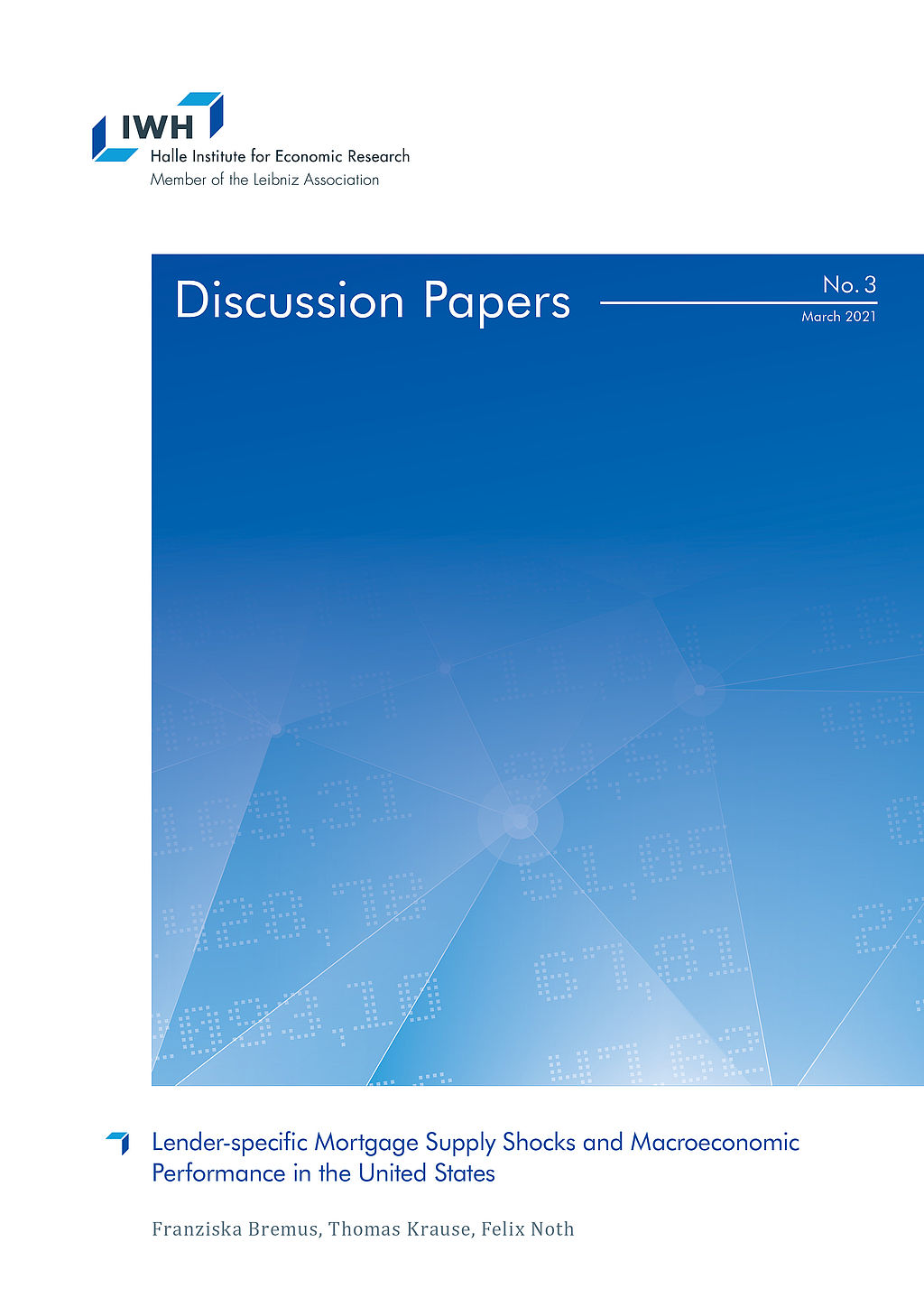
Lender-specific Mortgage Supply Shocks and Macroeconomic Performance in the United States
in: IWH Discussion Papers, Nr. 3, 2021
Abstract
This paper provides evidence for the propagation of idiosyncratic mortgage supply shocks to the macroeconomy. Based on micro-level data from the Home Mortgage Disclosure Act for the 1990-2016 period, our results suggest that lender-specific mortgage supply shocks affect aggregate mortgage, house price, and employment dynamics at the regional level. The larger the idiosyncratic shocks to newly issued mortgages, the stronger are mortgage, house price, and employment growth. While shocks at the level of shadow banks significantly affect mortgage and house price dynamics, too, they do not matter much for employment.
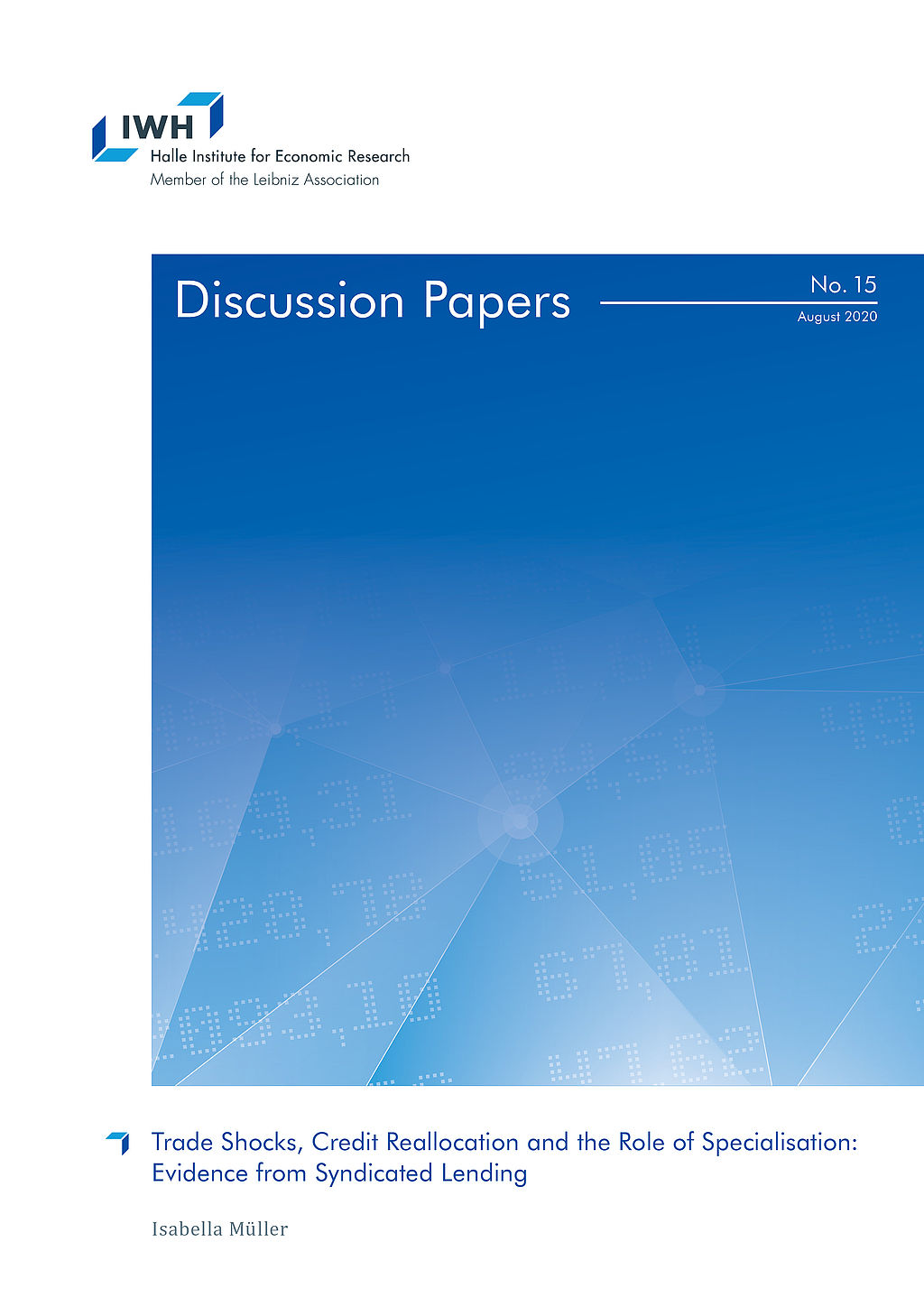
Trade Shocks, Credit Reallocation and the Role of Specialisation: Evidence from Syndicated Lending
in: IWH Discussion Papers, Nr. 15, 2020
Abstract
This paper provides evidence that banks cut lending to US borrowers as a consequence of a trade shock. This adverse reaction is stronger for banks with higher ex-ante lending to US industries hit by the trade shock. Importantly, I document large heterogeneity in banks‘ reaction depending on their sectoral specialisation. Banks shield industries in which they are specialised in and at the same time reduce the availability of credit to industries they are not specialised in. The latter is driven by low-capital banks and lending to firms that are themselves hit by the trade shock. Banks‘ adjustments have adverse real effects.
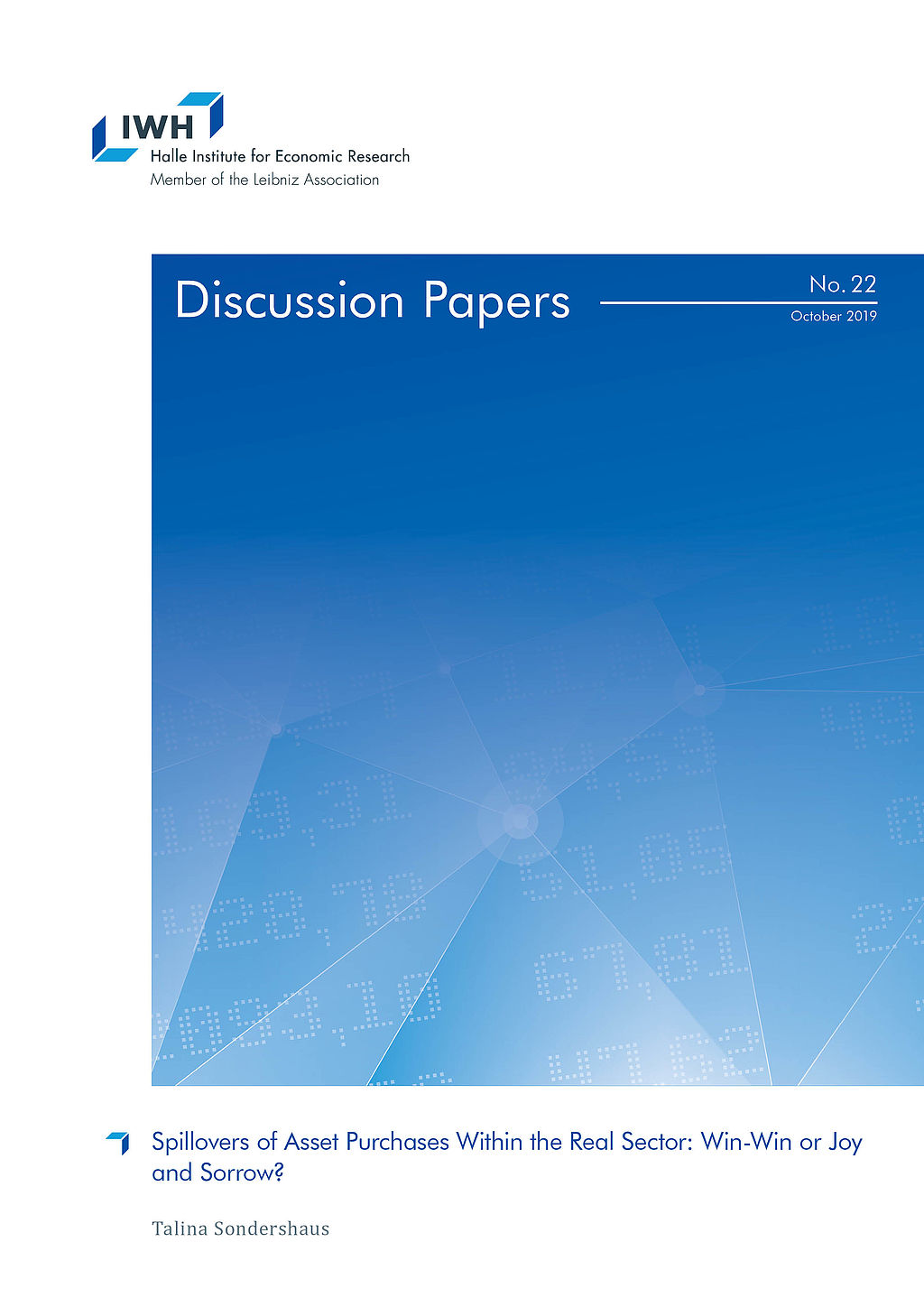
Spillovers of Asset Purchases Within the Real Sector: Win-Win or Joy and Sorrow?
in: IWH Discussion Papers, Nr. 22, 2019
Abstract
Events which have an adverse or positive effect on some firms can disseminate through the economy to firms which are not directly affected. By exploiting the first large sovereign bond purchase programme of the ECB, this paper investigates whether more lending to some firms spill over to firms in the surroundings of direct beneficiaries. Firms operating in the same industry and region invest less and reduce employment. The paper shows the importance to consider spillover effects when assessing unconventional monetary policies: Differences between treatment and control groups can be entirely attributed to negative effects on the control group.


















